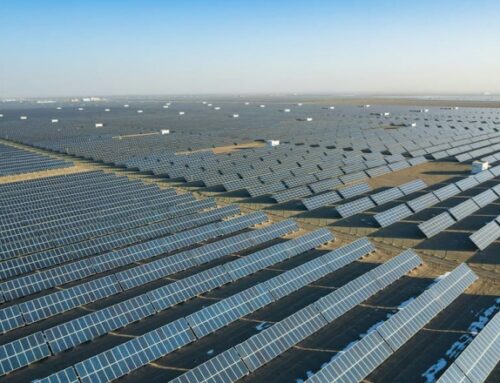Floating solar generation is ‘ample’, widespread across U.S. reservoirs
January 3, 2025
Federally controlled reservoirs in the U.S. have “ample” potential for floating solar generation capacity, ranging from an estimated 861 GW to 1,042 GW, the National Renewable Energy Laboratory (NREL) said in a new study. These estimates have the potential to generate about half of the solar energy needed to decarbonize the U.S. electric grid by 2050, NREL found.
While this range is consistent with previous studies’ attempts to quantify floating solar potential, the study found that the wide variability in reservoir suitability for floating solar development is based on site-specific factors in the U.S.
The study helps better inform not only how much floating solar capacity may be available, but also where this capacity may be more likely to be built, the researchers said. Floating solar’s potential is broadly, but not equally spatially distributed throughout the U.S., the researchers said.
The research assessed the potential for floating solar development purely from a technical feasibility standpoint. Other limitations, such as economic and regulatory limitations, were not considered in the research.
The researchers outlined a novel geospatial method to assess floating solar’s potential using factors that are specific to its technology on federally owned and regulated reservoirs in the U.S. Even in the most conservative scenario for federally owned and regulated reservoirs, the researchers said floating solar has an estimated potential that is more than half the estimated solar capacity required for a decarbonized U.S. electricity grid in 2050.
While the study found a wide range of estimated potential system sizes, most (57%) are between 10 MW and 1 GW in size with a median of 123 MW. In what the researchers said is a “conservative scenario,” Texas contains approximately 16% of the nation’s total floating solar capacity.

Image: National Renewable Energy Laboratory
Floating solar potential is well-distributed throughout the U.S. (excluding areas where potential reservoirs had too cold of temperatures to considered). The researchers found the southeast and southern plains states generally had reservoirs with the largest capacities.
The U.S. has more floating solar potential than any other country in the world, according to a study published in Nature Sustainability in March 2023.
Interest in floating solar is rising, especially since the “Protect our Waters and Expand Renewables on our Reservoirs Act” was introduced by Rep. Paul Tonko, D- N.Y., and Rep. Jared Huffman, D-Calif., in December 2022.
Driven by rising demand, lower capital expenditure and supportive policies for lower-carbon energy, the U.S. is on track to install 0.7 GW of floating solar by 2033. Globally, the global floating solar market is set to reach 77 GW of installed capacity by 2033, according to analysis published in November 2024 by Wood Mackenzie. Due to longer commercial timelines, Wood Mackenzie expects these projects’ peak installed capacity to come between 2026 and 2028.
Floating systems have many advantages, such as the use of water instead of land and potential synergies with hydroelectric power plants. Floating solar can operate wherever there’s a water body, so it can be co-located with existing hydropower and pumped storage hydropower reservoirs. This allows the two types of generation sources to share infrastructure, which, according to NREL, increases energy production and may reduce costs.
Floating solar systems have CO2 emissions around 50 grams per kWh of electricity generated, which is about seven times less than the current electricity mix in Germany and three to four times less than the EU-wide target for 2030, PVPS said.
Compared to ground-mount solar systems, floating solar also has an increased panel efficiency due to the environment’s cooling effects and low shading. The systems require significantly less land than ground-mounted systems, and reduce the need to clear, evacuate and grade land for site preparation.
As the global floating solar market takes off, the NREL researchers said that efforts to understand the technology’s role in future energy systems is still in its infancy stage. According to the researchers, the technology faces its own unique technical and engineering constraints, such as problems that currents and ice floes may pose.
The study “Floating photovoltaic technical potential: A novel geospatial approach on federally controlled reservoirs in the United States” will be published in Solar Energy’s upcoming February issue. The study was paid for by the Solar Energy Technology Office and the Water Power Technology Office of the United States Department of Energy, Office of Energy Efficiency and Renewable Energy.
This content is protected by copyright and may not be reused. If you want to cooperate with us and would like to reuse some of our content, please contact: editors@pv-magazine.com.
Search
RECENT PRESS RELEASES
Related Post




